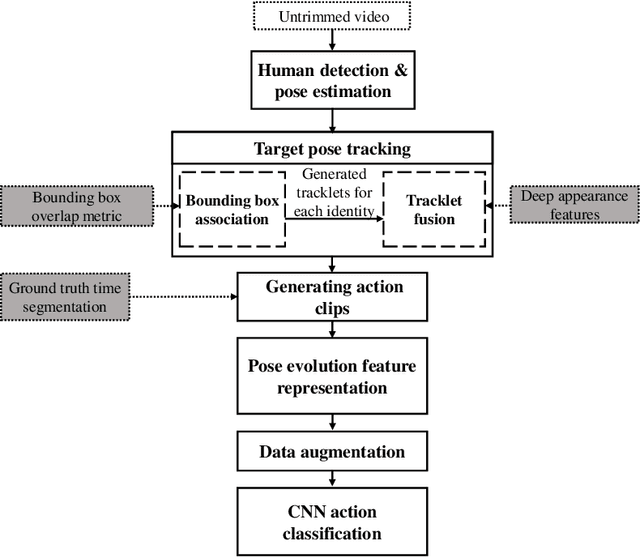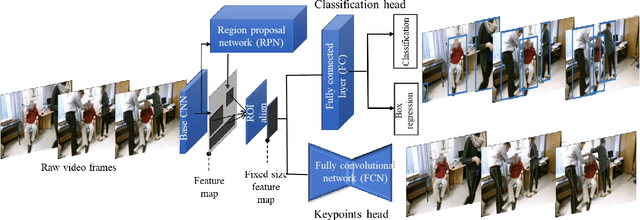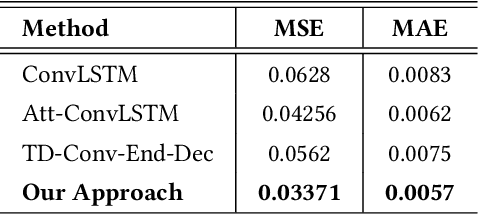Kevin Thomas
Target-Specific Action Classification for Automated Assessment of Human Motor Behavior from Video
Sep 20, 2019



Abstract:Objective monitoring and assessment of human motor behavior can improve the diagnosis and management of several medical conditions. Over the past decade, significant advances have been made in the use of wearable technology for continuously monitoring human motor behavior in free-living conditions. However, wearable technology remains ill-suited for applications which require monitoring and interpretation of complex motor behaviors (e.g. involving interactions with the environment). Recent advances in computer vision and deep learning have opened up new possibilities for extracting information from video recordings. In this paper, we present a hierarchical vision-based behavior phenotyping method for classification of basic human actions in video recordings performed using a single RGB camera. Our method addresses challenges associated with tracking multiple human actors and classification of actions in videos recorded in changing environments with different fields of view. We implement a cascaded pose tracker that uses temporal relationships between detections for short-term tracking and appearance-based tracklet fusion for long-term tracking. Furthermore, for action classification, we use pose evolution maps derived from the cascaded pose tracker as low-dimensional and interpretable representations of the movement sequences for training a convolutional neural network. The cascaded pose tracker achieves an average accuracy of 88\% in tracking the target human actor in our video recordings, and overall system achieves average test accuracy of 84\% for target-specific action classification in untrimmed video recordings.
Predicting Future Opioid Incidences Today
Jun 20, 2019



Abstract:According to the Center of Disease Control (CDC), the Opioid epidemic has claimed more than 72,000 lives in the US in 2017 alone. In spite of various efforts at the local, state and federal level, the impact of the epidemic is becoming progressively worse, as evidenced by the fact that the number of Opioid related deaths increased by 12.5\% between 2016 and 2017. Predictive analytics can play an important role in combating the epidemic by providing decision making tools to stakeholders at multiple levels - from health care professionals to policy makers to first responders. Generating Opioid incidence heat maps from past data, aid these stakeholders to visualize the profound impact of the Opioid epidemic. Such post-fact creation of the heat map provides only retrospective information, and as a result, may not be as useful for preventive action in the current or future time-frames. In this paper, we present a novel deep neural architecture, which learns subtle spatio-temporal variations in Opioid incidences data and accurately predicts future heat maps. We evaluated the efficacy of our model on two open source datasets- (i) The Cincinnati Heroin Overdose dataset, and (ii) Connecticut Drug Related Death Dataset.
 Add to Chrome
Add to Chrome Add to Firefox
Add to Firefox Add to Edge
Add to Edge